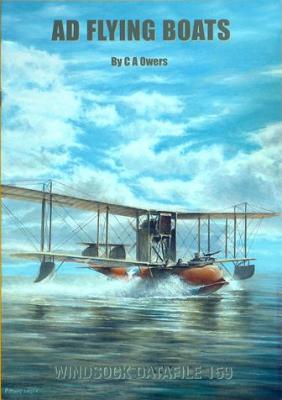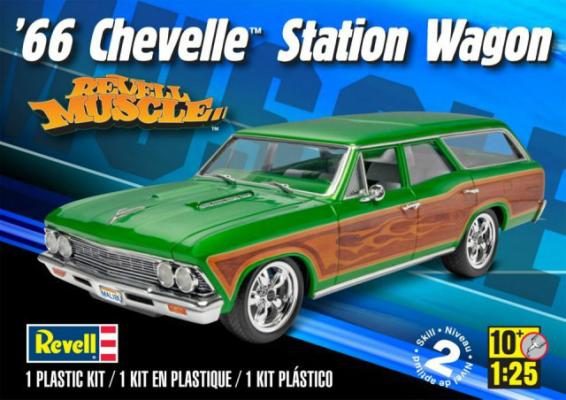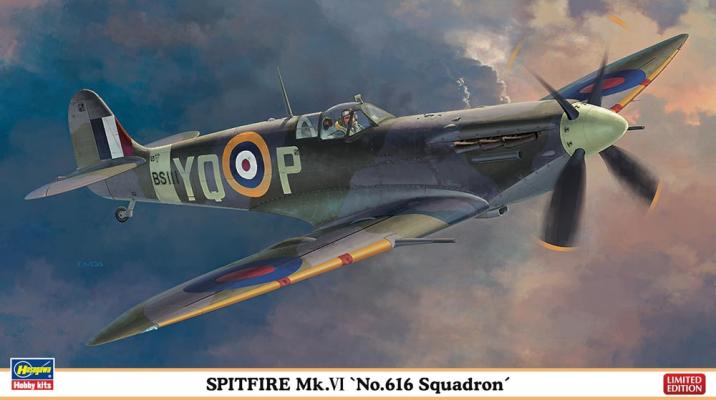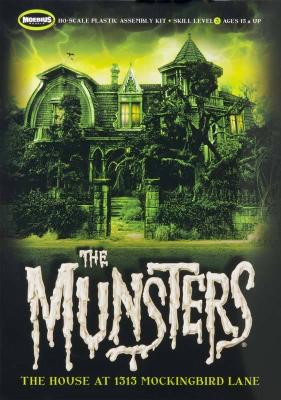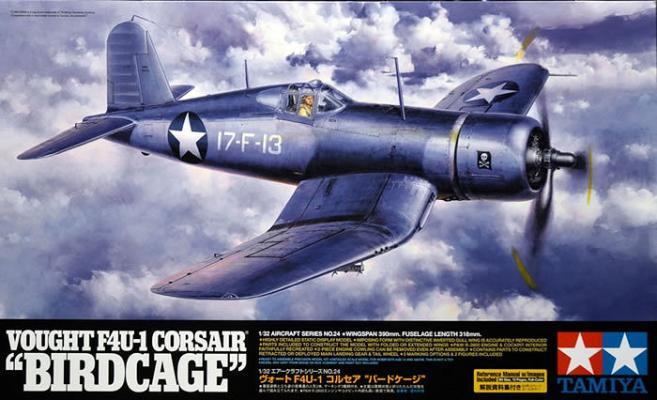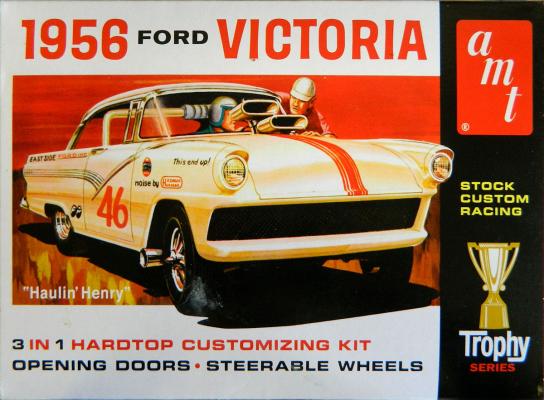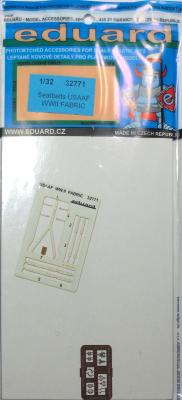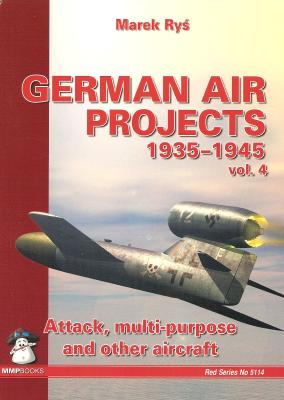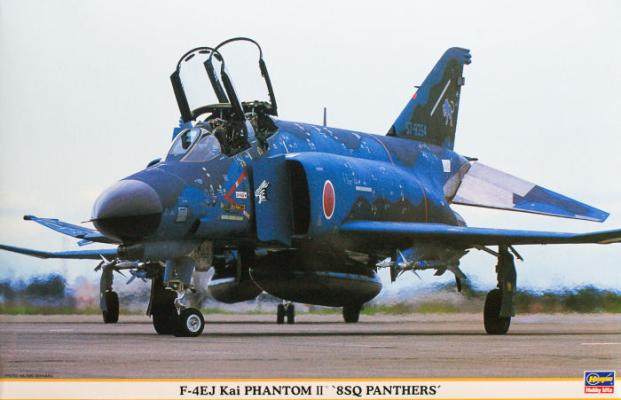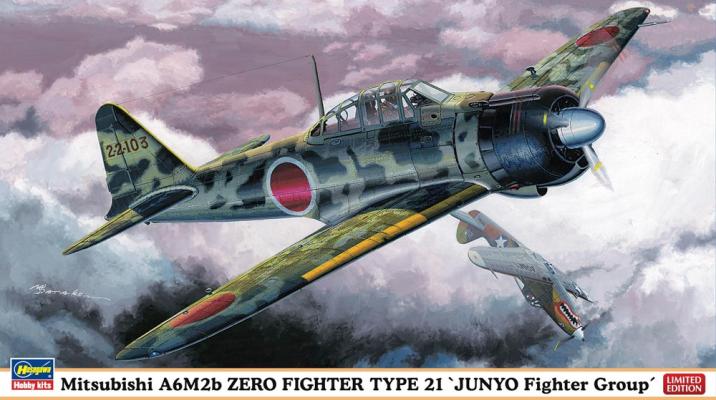Windsock Datafiles from Albatros Productions are considered by many to be the most comprehensive reference/historical publications available for those who build WW I scale aircraft models. Each volume focuses on a specific aircraft and can be counted on to provide a thorough study of the subject. The most recent volume, Windsock Datafile No. 159, details the history of the AD Flying Boats.
What's New
In front of the "A" pillar, the '66 Chevelle Station Wagon is all muscle car. It was built with the same engine and drive train as one of the most potent muscle cars in history, the Chevelle. But you have to put the kids somewhere. The station wagon's designers stretched the two-door, four-seat car into a four-door, eight-seat wagon.
The kit directions contain a paint guide that you can follow if you so desire, and a beautiful decal sheet should you care to use it. The decal sheet contains decals that will cover most of the side in a wood grain pattern with flames.
Engine
The kit features a big block 396 ci engine that’s engraved very well. I changed out the kit chrome-plated valve covers for a resin pair of painted Moroso covers. The engine then got spark plug wires in the correct firing order, alternator support, fuel lines, throttle linkage, an aftermarket air filter, and heater hoses.
The Instruction Sheet
The instruction sheet is typical Hasegawa – that is, the instructions are free of any errors (at least that I noticed), easy to interpret, and with clearly labeled paint call-outs and part call-outs. The thirteen construction steps are on three pages, decal placement and painting guides are on two pages, aircraft history is on a single page, and a parts guide and color call-out list is on a single page.
For the most part, you can jump around on the instructions from step to step. We all do it. Not to worry, but study the assembly process for the prop or you’ll end up having a bit of a mess on your hands. Do not install the blades into the spinner until the spinner has been attached to the spinner shaft. Also, the placement of the six exhaust stacks is unique – the sequence is according to the part number of the stack. Start with the stack farthest aft on each side and work toward the front of the aircraft.
I remember when The Munsters were first introduced to us. Just your typical all-American family, who came from Transylvania, and who also just happened to be Frankenstein and The Bride of Frankenstein! The rest of the family had Count Dracula as the slightly off-kilter Grandpa; a prepubescent wolf boy named Eddie who slept in a cupboard; and one out-of-place niece, the beautiful Marilyn. The house they lived in was an amazing place of dungeons, secret passages, and cob webs galore. The architecture was mostly Gothic, with hints of Victorian included, and a little Haunted House thrown in for good measure!
Once I had the fuselage sealed up, it was time to build the engine. The engine is 46 pieces and the fit is excellent. One note – the parts and order of addition is specific. Also, take time and make sure alignment is good. The intake and exhaust pipes coming off the back of the front cylinders needed to be aligned where they slide over the exhaust pipes I mounted to the firewall in part 1. One thing missing was the ignition wires. I used 32-gauge wire and added them based on Internet pictures. Once the engine was complete, the front cowling and rings were attached. These were a little fiddly and support the remainder of the cowling, and need to be glued on firmly. The contact points are small, so make sure things are square and glued tightly. Lastly, there is the choice of open or closed cowl flaps. I chose closed for this one (yes, I WILL build more), and since I was building option A, there were also a few special instructions.
This ’56 Ford Victoria was originally issued by AMT in the 1960’s, then re-released several times after that. Even with Round 2’s mold clean-up process, I have never encountered so much flash on a model before. Literally, every piece had excessive flash that needed to be cleaned off prior to fitting and painting.
Eduard’s original detail sets consisted of photo etch brass to be assembled and painted by the builder. More recently, they started producing pre-painted seatbelts and other details (still made out of brass). This is the next evolution in the ever-expanding world of Eduard’s accessories line.
Eduard’s #32771 set includes pre-cut belts made out of a fabric material and a photo etched hardware fret that assemble into one set of seatbelts designed for use in USAAF aircraft (primarily fighters). I believe this was originally a product developed by HGW (their logo is stamped on the fabric fret).
This is the fourth and final volume in MMP’s German Air Projects series that covers Luft46 “might have beens.” This particular volume covers attack, multi-purpose, and “other” subjects. The “other” is essentially an addendum to the other 3 volumes, and covers subjects that were previously omitted, or subjects about which new information has been uncovered. Without the “other” section, this would be a very slim volume! Illustrations throughout the book consist of line drawings and artist renderings – there are no photos in this book as everything is conjecture.
The first 38 pages of the book cover attack and multi-purpose aircraft, arranged by manufacturer. Line drawings accompany many of the sections.
Pages 39 through 64 cover other types of aircraft not previously written about in previous volumes (or those with newly discovered information). Again, many line drawings accompany the text.
Hasegawa has re-released their “J” mark (Japanese) F-4EJ Phantom II. And that is a great thing, as this model is a pleasure to assemble. The box has 8 grey sprues, one clear sprue (for a total of 132 pieces), and a very large decal sheet with markings for five 8SQ aircrafts, including stencils for one airframe.
Regarding the stencils – they are the proper color. These airplanes were “hand-me downs” from other squadrons and they arrived in a two-gray interceptor camouflage. When transferred to a maritime strike squadron, their stencils were masked off and the aircraft were painted over, leaving a grey surrounding to the stencils –which are black. Only after the airplanes were sent for overhaul at the maintenance shop did they get re-painted and new stencils (in white) were applied. If you look carefully to the box image, you can see the grey surrounding area in the stencils.
History Brief
The IJN aircraft carrier Junyo was a mighty warship at the outset of WWII. Her fighter groups were made up of Zeros, and they outclassed all other opposing fighter types at that time. The Junyo, however, would suffer heavy damage in the Battle of Guadalcanal and would never again regain her prior reputation. The carrier would repeatedly suffer damage at the hands of the US Navy, thus keeping her out of service for long periods of repairs. Her air crews carried on the fight despite being depleted on more than one occasion. By war’s end, the Junyo was nothing more than a floating derelict with irreparable damage and her aircrews wiped out.

